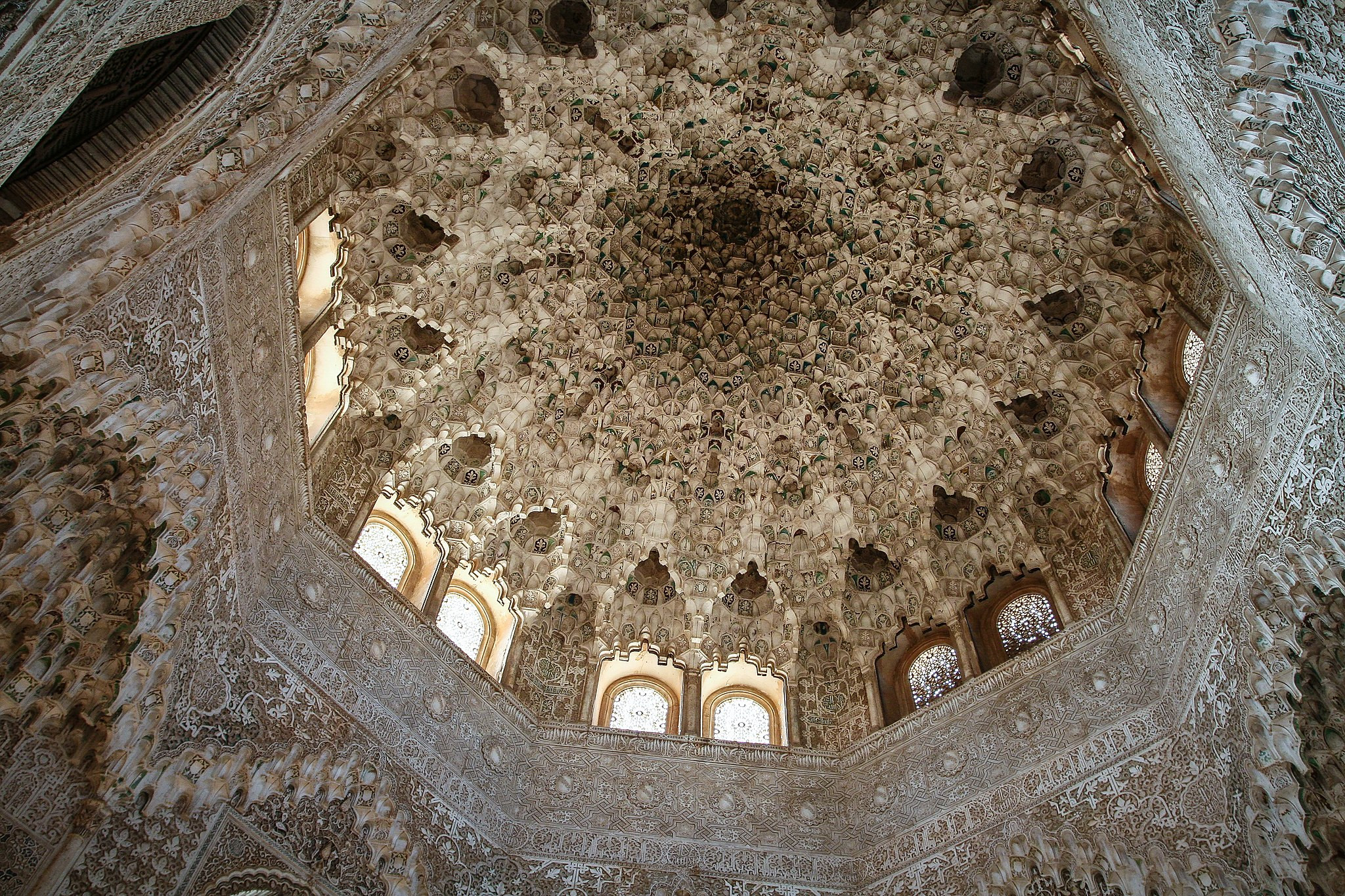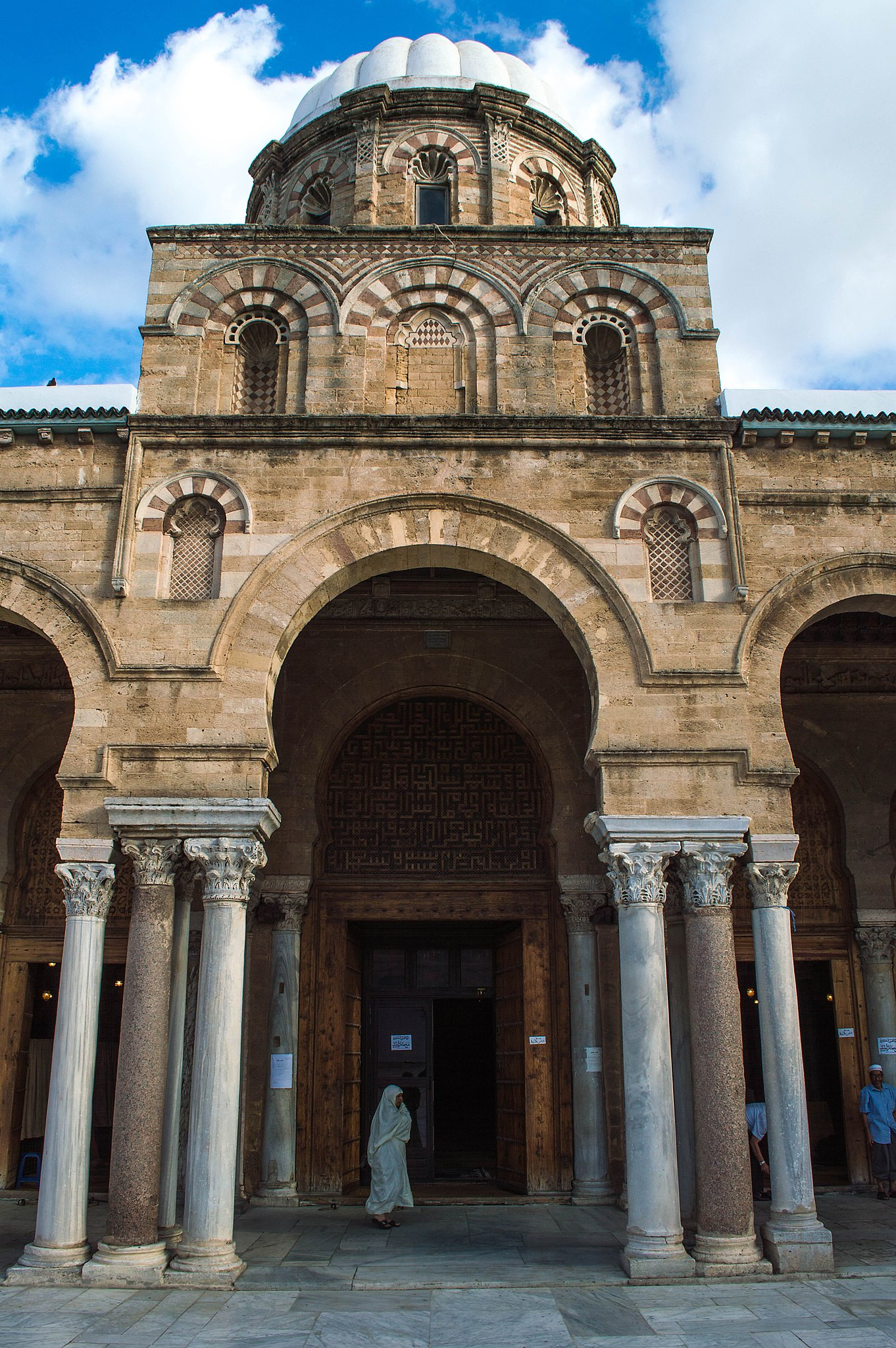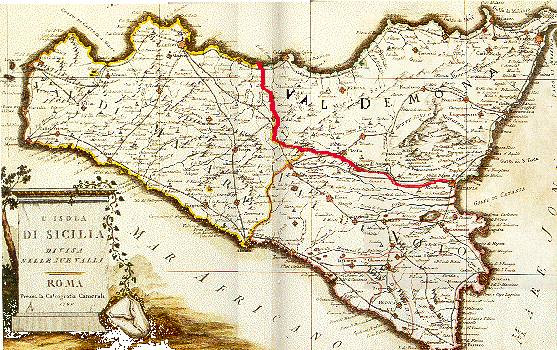
Gaetano Spampinato , 2023
The Cuba of Castiglione: Its Co-Produced Construction, its Functions, and its Mysteries in Entangled Medieval Sicily

Main facade of the Cuba (Fondo Ambiente Italiano)
Due to its central location in the Mediterranean basin, Sicily has been defined (and is still defined) as a “bridge” between two continents: Europe, from which it is separated by the narrow Strait of Messina, and Africa, with only 140 kilometres of distance between the western tip of the island and Tunisia. But Sicily has also functioned as an essential crossroads connecting two other “worlds”: the Western and Eastern Mediterranean. For merchants, warriors, and explorers moving from West to East (and vice versa), Sicily stood as an obligatory waypoint on their route. This central position made Sicily a land at the crossroads of colonization and invasion by various populations from the early stages of its history: the Sicani, Sicels, and Elymians; later, the Greeks in the East and the Phoenicians in the Northwest; and then the Romans, the Goths, the Byzantines, the Arabs, the Normans, the Swabians.… Every one of these populations left their imprint. Rarely did newcomers wipe out the preexisting cultural elements. Rather, they introduced distinctive aspects of their own language, religion, literature, and so on. Here is a rather significant example of this process on a linguistic level. Mount Etna, the great volcano overlooking the current province of Catania, is called Mongibello in the Sicilian dialect. This term is formed from two words in two different languages: mons in Latin, and jabal in Arabic, both meaning “mountain”. The mountain par excellence, in other words. But there are even more particular cases. In the Etna region, there is a river called Alcantara. This name derives from the Arabic al-kanthar, meaning “the bridge”, referring to an ancient Roman bridge. Thus, the Arabic “interpretation” of Sicily’s Roman past gave rise to the name of this river.

View of the Cuba, with the town of Castiglione di Sicilia in the background (Wikimedia Commons)
In Alcantara’s valley we find another sign of interchange among the diverse communities that resided in Sicily. Near the town of Castiglione di Sicilia, a stone’s throw from the river, stands an intriguing structure. This is the Church of Saint Domenica, designated as a national monument since 1909. The church is a small rectangular building topped with a small dome. The larger entrance is open to the East, while a smaller door, leading to a sort of courtyard (perhaps an old cemetery), is located on the side. The facade is characterized by the presence of a large triple window, while inside, a vaulted ceiling adorns the space. The interior is divided into a transept and a nave separated into three parts by arches.

View of the interior of the church (Wikimedia Commons)
Structures of this type, distinguished by their square design and the inclusion of (pseudo)domes, are widespread not just in Sicily but also in southern Italy, such as the exquisite Church of Stilo in Calabria and the Church of Saint Peter in Otranto, Apulia. Similar examples can also be found in Sardinia, like the Church of Saint Elijah in Nuxis. In Sicily, this type of building, often found in rural contexts, is commonly referred to as a cuba (pl. cube), or cubula, in the Sicilian dialect. The origin of this term is not clear. Scholars have searched for its etymology in all the languages spoken in Sicily between antiquity and the Middle Ages: kybos (“cube”) in Greek, cupa (“barrel”) in Latin, kubbah (“storage”) or qubbah (“dome”) in Arabic. Many of these buildings, abundant in Sicily, were erected from the mid-6th century onwards. In 535 the Byzantine commander Belisarius, dispatched by Emperor Justinian as part of the campaigns of “reconquest” of Italy and North Africa, wrested control of Sicily from the Goths. Some have seen these cube as part of a “propagandistic” program aimed at integrating Sicily into the Byzantine Empire, both politically and religiously – in contrast to the Latin Christianity that was prevalent in other Western Mediterranean regions. These buildings, in fact, were often located near Basilian monasteries, the Eastern Greek monastic order prevalent in the Island.

Main facade of the Cuba (Fondo Ambiente Italiano)
Until the end of the 19th century and the first half of the 20th century, the cuba of Castiglione was considered by scholars to be part of such a political program. According to this interpretation, the construction of the church should be dated to the 7th-9th century, before the Islamic conquest of the Island. However, a more in-depth architectural and artistic analysis of this building reveals a much more intricate reality. The central roof of the cuba is supported by a masonry technique known as muqarnas in Arabic, which features the characteristic “honeycomb” pattern. This technique is typical of Islamic architecture and is widespread, for example, in Umayyad Iberia – in Spanish, it is indeed referred to as Mocárabe.

Muqarnas dome with architectural technique, Alhambra Palace, Granada, 14th century (Wikimedia Commons)
The muqarnas is also documented in Sicily, especially in the Western part of the Island. It can be found in the Palatine Chapel and the Royal Palace in Palermo, which were erected during the early decades of Norman rule in Sicily (late 11th to early 12th century). The polychrome arches of the windows of the cuba also appear to be a technique used in Islamic architecture. While polychrome decorations are common in Roman architecture, they are not as prevalent in Byzantine art, especially in Sicily. Instead, they are attested, for example, in the windows of the dome of the Great Mosque of Tunis (10th-11th century).

Polychrome arches of the windows (Italia Virtual Tour)

Central entrance to the prayer hall, and its dome, Al-Zaytuna Mosque, Tunis, 9th century. Note the polychrome arches of the windows (Wikimedia Commons)
These two architectural features suggest that the cuba of Castiglione was not built during the Byzantine era but in the centuries that followed. The construction likely occurred after 901-902, specifically after the Islamic conquest of the Northeastern part of the Island. This region is called Val Demone. The etymology of this name has given rise to the most diverse hypotheses involving the Greek daimones, “demons”, who would have inhabited the Etna; the city of Demenna, probably founded by the Spartans (Lakedaimonioi); the Greek verb diameno, “to remain” or “to endure”, in this case referring to the maintenance of Christian identity. The Val Demone, in fact, was the last part of Sicily to be conquered by Muslims and, according to the sources, the most averse to Arabization.

18th-century map drawn by the cartographer Giovanni Maria Cassini, representing the division of Sicily into the three Valli, with the Val Demone in red (Wikimedia Commons)
Unfortunately, the lack of clear sources only allows us to formulate hypotheses regarding the construction of the cuba, its function, and its connection to the territory of the Alcantara. Nineteenth-century scholars often ruled out the possibility that the cuba could have been constructed during the Islamic rule of the Island, pointing to the so-called “Pact of Umar”, an Islamic regulation that forbade Christians and Jews in Islamic lands to build new houses of worship. But we now know that the Pact of Umar is not an early Islamic text but rather dates to the 11th century, and in any case, such legislation was not often followed. The cuba of Castiglione might well have been built during the Islamic era of the Island. Could the presence of muqarnas and the use of polychrome arches thus indicate a slow process of Arabization in this part of Sicily, which had previously “refused” Islamic influence? The absence in this region of other structures from the same period exhibiting similar characteristics makes this hypothesis somewhat unconvincing.
According to another hypothesis, the cuba was possibly constructed around the mid-11th century. Between 1038 and 1042, the Byzantine general George Maniakes was sent by Emperor Michael the Paphlagonian to conquer Sicily, taking advantage of internal political turmoil. In a short span of time, Maniakes managed to seize the Eastern part of the island: his expedition is celebrated in Byzantine sources as the great achievement of a glorious warrior. It was not the Arabs but the Byzantines themselves who would mark the end of this expedition. Maniakes was accused of treachery by his admiral, Stephen “the Caulker” (the emperor’s brother-in-law), with whom George had a turbulent relationship. The general was thus arrested and taken to prison in Constantinople. In reality, according to the historian Michael Psellos, Emperor Michael feared that the invincible general might conquer all of Sicily.
During this Sicilian expedition, Maniakes engaged in a campaign to commemorate physically the return of the Byzantines and of Eastern Christianity to the Island. The Val Demone is the area most touched by the activities of the Byzantine general: one could mention, for example, the town of Maniace in the Nebrodi mountains, which bears his name. Furthermore, the typikon (“ecclesiastical rule”) of the Monastery of Saint Philip Fragalà, not far from Messina, mentions the construction of a church dedicated to the Virgin by the will of the Byzantine conqueror. Maniakes’ concern with erecting structures within the Val Demone might be linked to the construction of the cuba of Castiglione. The Alcantara valley, through which the river flows from Nebrodi to the northeastern coast of Sicily, entering the Ionian Sea not far from Taormina, holds significant strategic value.

The Alcantara River (Fondo Ambiente Italiano)
The church of Saint Domenica could have been established as part of the Byzantine effort to reclaim and assert territorial control. From this perspective, the existence of Islamic architectural features in a building, which aspires to serve as a tangible symbol of Christianity’s “revival” on the Island, adds a further layer of interest. But again, the lack of documentation limits us to the realm of hypothesis.
Yet another postulate regarding the construction of the cuba of Castiglione shifts the dating to the late 11th century, after the Norman conquest of the Island. Around 1093, the Sicilian Basilian monk Chremes asked Roger I to (re)build the Saint Salvatore della Placa monastery near Francavilla, along with a series of buildings controlled by the monastery in Val Demone. The foundation charter of the Saint Salvatore monastery describing the agreement between the monk and the Norman king mentions, among these structures, two small, ruined churches. According to the early 20th-century scholar Freshfield, one of them could indeed be the church of Saint Domenica. However, the absence of detail suggests the need for caution, and the fact that the document does not identify the cuba by reference to the nearby river sparks doubt. Furthermore, the foundation charter mentions the reconstruction of the structure. This would imply that the church already existed, and its current form may or may not be attributed to the subsequent restoration during the Norman era. As a result, the initial construction date of the cuba and its original appearance remain shrouded in mystery.
Like all previous hypotheses, however, this one also aligns with its historical, political, and religious context, in this case that of the early years of the Norman Kingdom of Sicily. Roger I made efforts to unite under his rule the diverse groups inhabiting the Island. The backing for the reconstruction of Byzantine religious sites advocated by Chremes appears to fit precisely within this framework. Eastern monasticism had consistently been a vital facet of the island’s Christianity during the centuries of Islamic dominance. Over time, however, the Normans would gradually shift Sicily more toward Western “Catholic” Christianity, but during the initial phase of their domination, in the late 11th-century, the support of the Byzantines seems to have played a crucial role.
Whichever of these three hypotheses is accepted, the cuba of Castiglione raises a legitimate question: does its intricate structural design represent a case of architectural and religious co-production? We should ask that question, even while noting that the extent and distribution of various crafts in Sicily is not well understood. We do not know who the artisans involved in the construction of such buildings were, where they came from, how they were trained, nor their “religious affiliations”. The hypothesis of mixed ateliers, with Christian-Byzantine artisans on one side and Arab-Islamic on the other, jointly participating in the construction of the same structure, would offer an intriguing example of a deliberate and fruitful co-production. Such collaborations seem to have occurred in the construction of some important buildings, particularly in Palermo, such as the Arabo-Byzantine Martorana (Church of St. Mary of the Admiral) and the La Zisa Palace, both dating back to the 12th century. In that same period, the Church of Saints Peter and Paul in Agrò, not far from Castiglione, also hints at the involvement of religiously diverse skilled labourers. However, those cases involved large buildings located in more significant population centres. Could the construction of a modest rural cuba in the countryside of Val Demone also be a case of such “conscious co-production” between Christian and Muslim artisans?
Even if we assume that the craftsmen who worked on the cuba of Castiglione were solely Christians, this would still be highly relevant in the context of religious co-production, demonstrating that Christian Sicilian artisans had incorporated Islamic techniques in the construction of a Byzantine church. During the two centuries of Islamic rule, Sicilians would have developed a “co-produced" architecture, incorporating a range of Islamic building practices (such as the muqarnas and the polychrome arches) that seemed particularly effective, both structurally and aesthetically. Over time, these techniques would no longer have been perceived as part of Arab-Muslim architecture but would have become integral to the “co-produced” style of the Island. In this sense, we could say that, consciously or unconsciously, Muslims and Christians, Arabs and Byzantines, co-produced a Sicilian artistic and architectural style between the 9th and 12th centuries.
Compared to the monuments of Palermo, the cuba of Castiglione is a small example of such co-production, but it is no less fascinating, despite the mysteries surrounding its construction. This small church, standing alone under the gaze of Mount Etna in the Alcantara valley, bears witness to the movements of people, cultures, and ideas that Sicily experienced in its history as a “bridge” of the Mediterranean.
Further Reading:
Edwin Hanson Freshfield, Cellae Trichorae and Other Christian Antiquities in the Byzantine Provinces of Sicily with Calabria and North Africa, Including Sardinia, Rixon & Arnold, London, 1913.
Luigi Santagati, Storia dei Bizantini di Sicilia, Lussografica, Caltanissetta, 2012.
Anneliese Nef, Conquérir et gouverner la Sicile islamique aux Xle et Xlle siècles, Publications de l’École française de Rome, Rome, 2011.
Susanna Valpreda, “Le cube di Sicilia. Edifici di culto a pianta centrale in età bizantina”, Mediterraneo Antico (2017), 1-8.